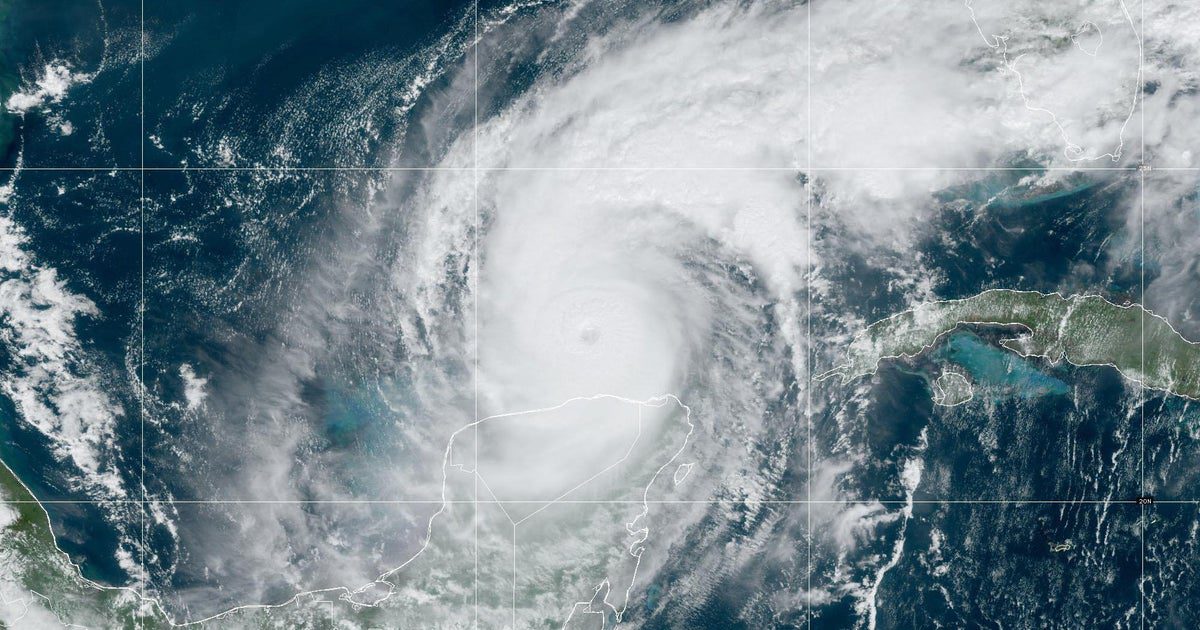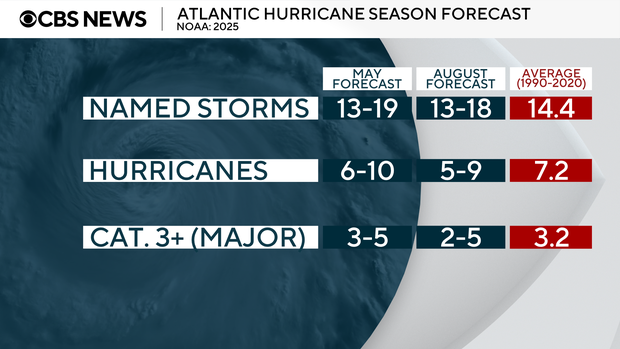Two months into the 2025 Atlantic hurricane season, officials at the National Oceanic and Atmospheric Administration have updated their forecast, predicting slightly fewer named storms. The new outlook released Thursday says there is a 50% chance of above-normal activity, a decrease from 60% in the agency’s May forecast.
NOAA, the federal agency in charge of weather and climate predictions, now expects 13 to 18 named storms, five to nine of which could become hurricanes, including two to five major hurricanes. The previous ranges were 13 to 19 named storms, six to 10 hurricanes and three to five major hurricanes.
The adjusted predictions include the four named tropical storms so far this season.
CBS News
The Atlantic hurricane season officially runs from June 1 until Nov. 30, with peak activity typically occurring between mid-August and mid-October.
An average season produces 14 named storms, including seven that develop into hurricanes. Three of those, on average, become major hurricanes, meaning a Category 3 or higher on the Saffir-Simpson scale, with sustained wind speeds of at least 111 miles per hour. Category 5, the top of the scale, brings wind speeds of at least 157 mph.
Every Atlantic hurricane season since 2015 has produced more storms than the “average” — a standard based on annual hurricane activity recorded over the period from 1990 to 2020 — although four seasons since then have produced two or three major hurricanes, either below or on par with the 30-year norm.
According to forecasters, there are a combination of factors influencing the number of storms that materialize over the course of the season. A significant one in 2025 is the neutral phase of the El Niño-Southern Oscillation, or ENSO, cycle, which often plays a substantial role in the intensity of tropical activity in the Atlantic.
Warmer than average ocean temperatures and weak wind shear in the forecast may also lead to a more active season, the NOAA outlook says, as could the potential for higher storm activity from the West African Monsoon, the weather system from which most Atlantic hurricanes originate.
Some seasons are more active than others, and hurricanes at times can occur outside of the designated six-month window. Science has shown in recent years that climate change is contributing to the intensity of these storms, which are fueled by warmer waters. Researchers are continuing to explore connections between rising temperatures and more…
Disclaimer
We strive to uphold the highest ethical standards in all of our reporting and coverage. We 5guruayurveda.com want to be transparent with our readers about any potential conflicts of interest that may arise in our work. It’s possible that some of the investors we feature may have connections to other businesses, including competitors or companies we write about. However, we want to assure our readers that this will not have any impact on the integrity or impartiality of our reporting. We are committed to delivering accurate, unbiased news and information to our audience, and we will continue to uphold our ethics and principles in all of our work. Thank you for your trust and support.
Website Upgradation is going on. For any glitch kindly connect at 5guruayurveda.com




